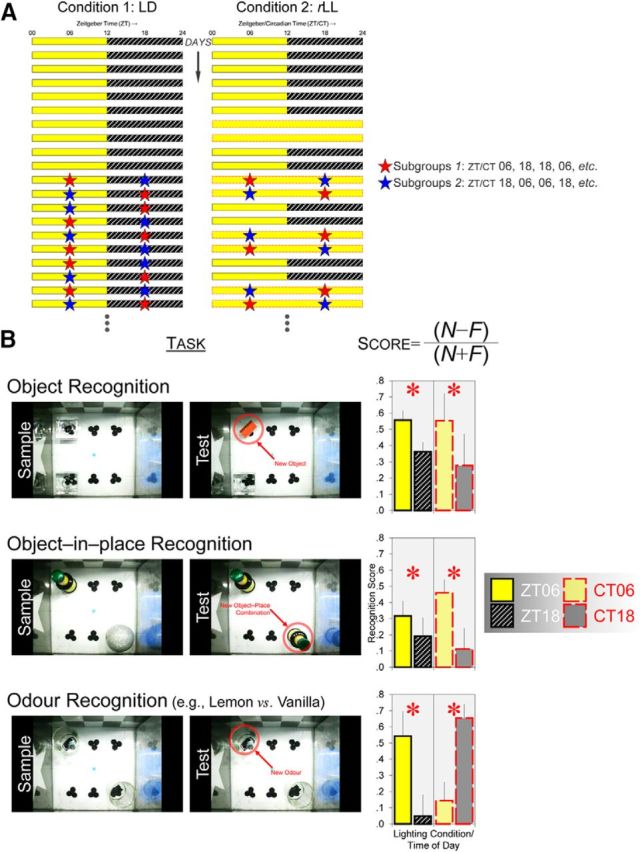Figure 1.

rLL desynchronizes object and visuospatial versus odor recognition memory performance. A, Under the standard 12 h:12 h LD condition (left), each mouse was given different types of recognition task repeatedly at midday (ZT 6) and midnight (ZT 18). Under rLL (right), the lighting condition was alternated between 2 d of LD and 2 d of LL and mice were tested at subjective midday (CT 6) and at subjective midnight (CT 18) starting from the second cycle of LL. Red and blue stars show the different time points at which recognition tasks were given. Mice in Subgroup 1 were given different recognition tasks at ZT/CT 6, 18, 18, 6, 18, 6, 6, 18, etc., across days, whereas Subgroup 2 received the reverse arrangement (i.e., ZT/CT 18, 6, 6, 18, etc.). B, Under LD, performance in the object, object-in-place, and odor recognition tasks was consistently better at ZT 6 than at ZT 18. Under rLL, object and visuospatial performance was better at CT 6 than at CT 18, similar to the results under LD (top and middle rows); asterisks (*p < 0.05) indicate main effects of time of day on recognition scores (N − F)/(N + F), where N and F represent novel versus familiar objects, object–place combinations, or odors. However, odor recognition performance was phase shifted and became better at CT 18 than at CT 6, resulting in a significant lighting condition × time of day interactive effect on odor recognition scores (bottom row); asterisks (*p < 0.05) indicate simple main effects of time of day. In the object recognition task, n = 32 under LD and n = 8 under rLL; in the object-in-place task, n = 16 under LD and n = 16 under rLL; in the odor recognition task, n = 8 under LD and n = 24 under rLL. Error bars indicate SEM.
